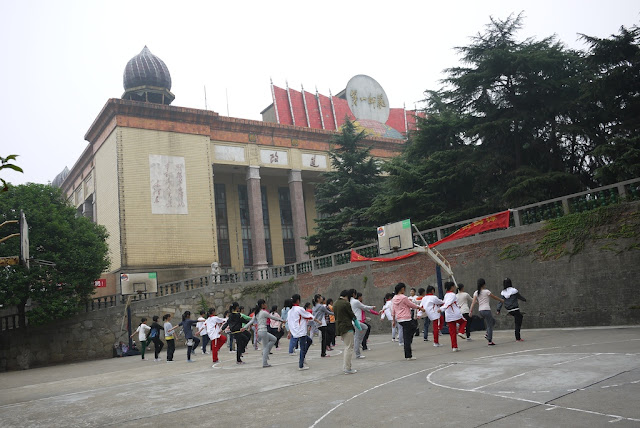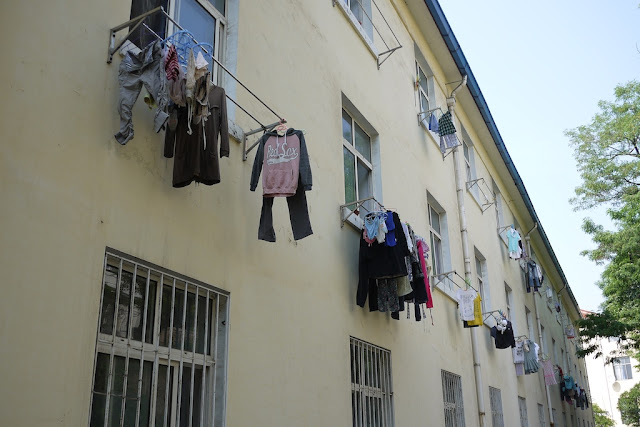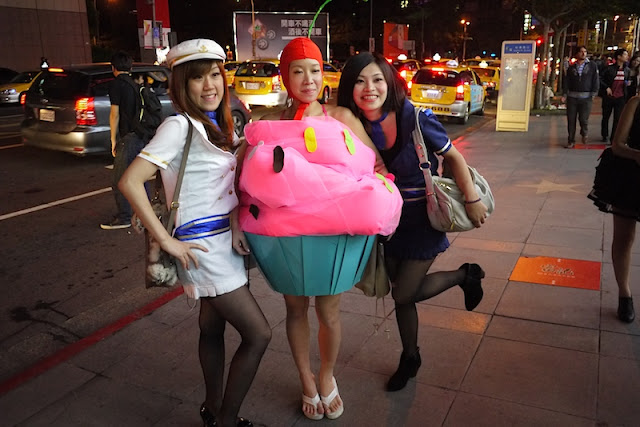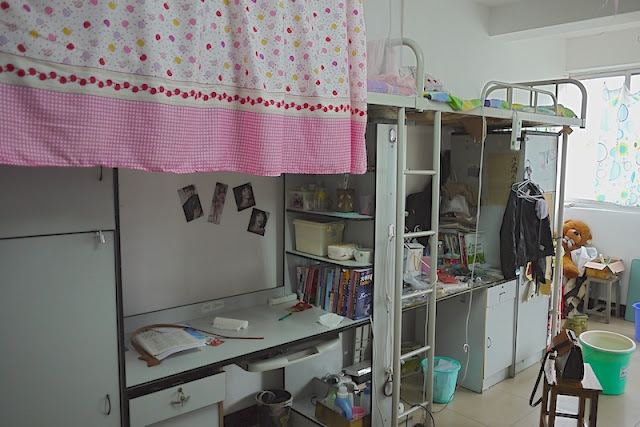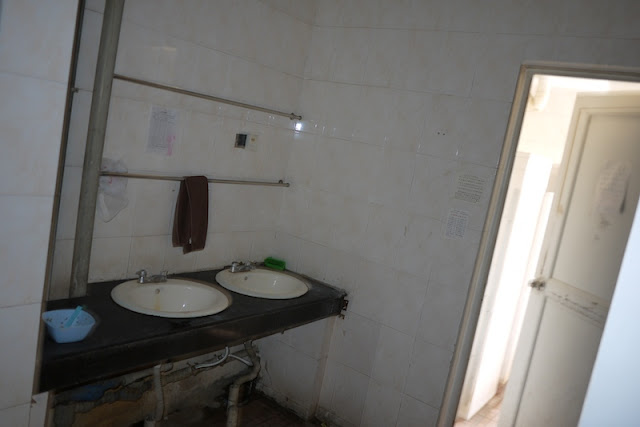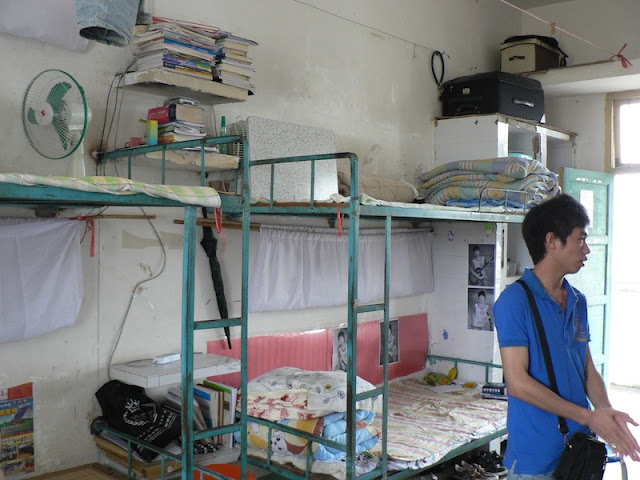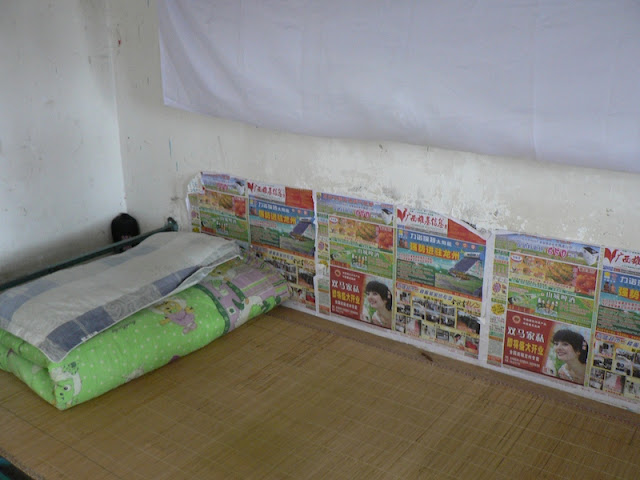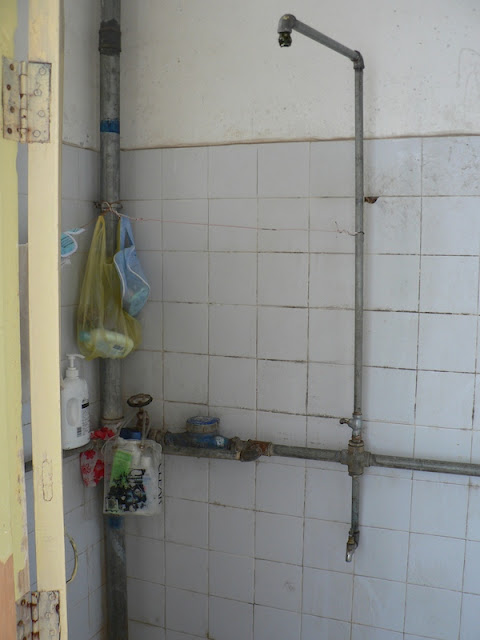The above scene in front of the library at the Hunan First Normal University in Changsha, Hunan province, represents something I have seen many times at universities in China: students participating in "physical education" classes--though sometimes they seem to involve rather light activities. There has been growing concern in China about the physical fitness of its students. As China Radio International (CRI) reports on a recent attempt to address this issue:
A circular, recently published by China's State Council has proposed an assessment system for middle school students' physical health, including a compulsory PE exam for students being recruited to universities or colleges...And the China Daily reports on new policies for colleges:
Recently, increasing study pressure has forced Chinese students to spend more time at their desks rather than on playgrounds. Obesity and poor nutrition are quite common, as described by Qu Guoyong, a middle school PE teacher at east China's Shandong Province.
Experts have praised new policies that encourage physical education at universities, which will see students being tested on their fitness levels...If you are skeptical any of these methods, you are not alone. CRI reports that some experts have expressed their doubts about their effectiveness:
The policy will see students' physique and fitness added as a factor in evaluating their performance at the university, Wang Dengfeng, director of physical, health and arts education for the Ministry of Education, told China Youth Daily.
[Mao Zhenming, dean of Beijing Normal University's sports college] predicted that student fitness levels will become part of the evaluation system for universities.
The current evaluation system looks at physical education programs, including investment in sports facilities, recreation areas and the rate of students reaching the national fitness standard, Mao said.
He hopes there will be more ways to measure physical education, such as the number of sports clubs, involvement in dormitory sports, and opening hours for recreation centers.
Random inspections from authorities are also necessary, he said.
Cheng Fangping, a senior researcher on education studies with Renmin University of China says the plan is not feasible since the promotion of students' physical health cannot be achieved through PE exams alone.But further change is possible. And some professionals in the field appear to be seeking ideas from outside of China. A press release from the U.S. Department of State describes a recent example:
"Students would take physical exercises just for the purpose of passing the exams rather than developing a healthy lifestyle. They would have no incentive to pursue more sporting activities after they finish the exams. They may have high exam scores but poor health conditions. So, teachers should encourage students to take exercises as an effective way of improving their learning efficiency."
Chinese physical education professionals will travel throughout the United States from October 15-23 to exchange ideas and experiences with their U.S. counterparts, as they look to achieve the shared goals of ensuring that all sectors of the population have access to sports and recreation, and the opportunity to learn physical fitness skills.I will refrain from any jokes that could be made about Chinese coming to the U.S. for advice about physical education. Instead, I will positively note my support for cross-cultural exchanges such as this one. They can open up each side to new ideas--on the topic of improving the physical fitness of students, both China and the U.S. could probably use some.

